Guest blog: Tips for first-time riders
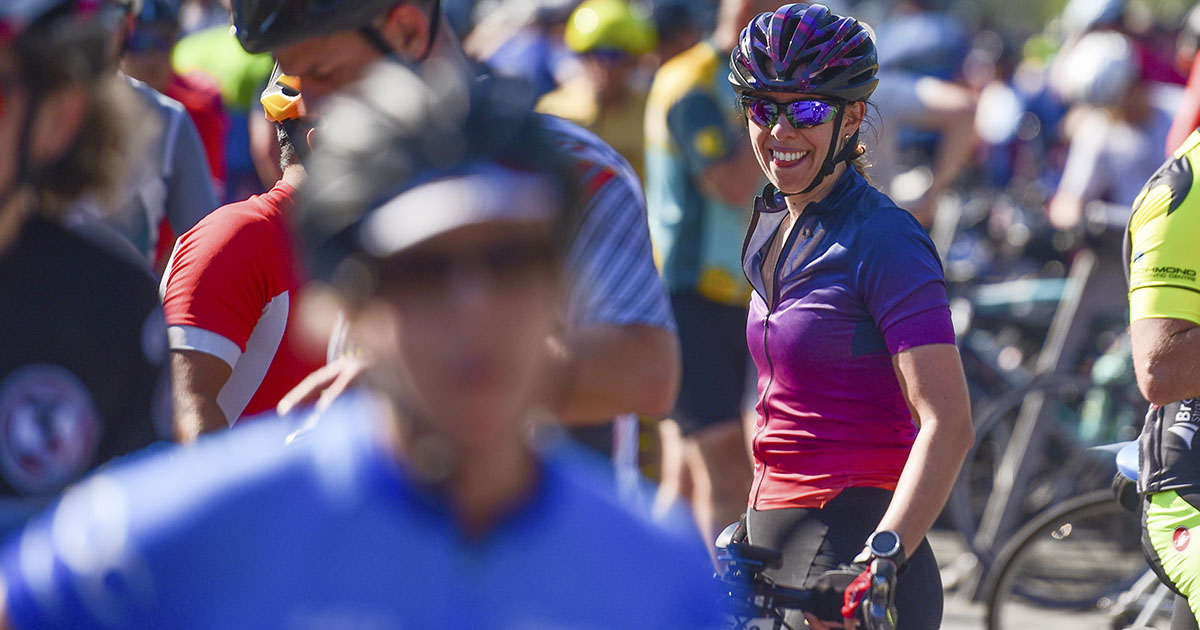
Guest writer: Brian Lim – Originally posted on vancouverisawesome.com
The most famous of the North American Fondos, the RBC GranFondo Whistler is often the training target for many cyclists in the summer season.
There are three lengths or versions of the Fondo: the Medio (55km distance, 834m elevation), the Gran Fondo (122km distance, 2136m elevation ) and the Forte (152km distance, 3118m elevation). These tips focus on the Gran Fondo.
The Gran Fondo is by no means an easy ride, and completing it is an accomplishment in itself; 122km and 2136m of climbing presents a challenge to even veteran riders. That being said, the RBC GranFondo Whistler is such an amazing experience. When else do you have the opportunity to ride on the actual Sea to Sky Highway, and enjoy the majestic views while crushing your cycling goals?
The following advice is for cyclists newer to cycling or who have never ridden the Fondo before.
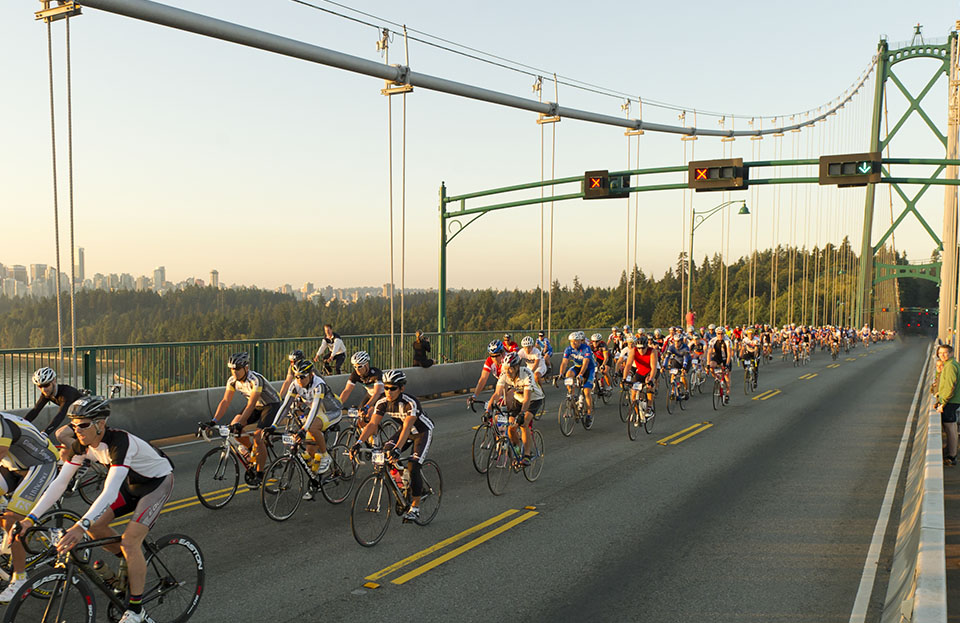
Riders take the Lions Gate Bridge in Vancouver at the beginning of the RBC GranFondo Whistler. Photo: RBC
Communicate!
This is to not only protect yourself but to also protect those around you. Make sure that if you ride the Fondo you are familiar with and comfortable using hand signs – especially those for “slowing” and “stopping.” In my experience, it is also safer/better manners to vocally let people know you are behind them or if you are passing them (and if passing, on which side you are passing.) It is also very good etiquette to point out dangers (debris, holes, pylons) to cyclists behind you, just in case you are obstructing their view.
Be mindful of where you are
The safest place for you to be in relation to another rider is either fully behind them or in front of them, as that affords the most visibility and ability to avoid a collision. That being said, the GranFondo is a very large event – with total numbers in the thousands. Even though part of the highway is dedicated to the Fondo cyclists, it can/will be crowded in areas. If you cannot be directly behind/in front of a person for some reason, the next safest place is to their side. That allows them full visibility of you, though it reduces both your abilities to manoeuver to avoid a danger. The worst place to be is not fully behind a person and slightly to their side, creating a situation where your front wheel is overlapping their back. You are effectively in the person’s blind spot, and if they move across for any reason – you will most likely crash, and they might as well.
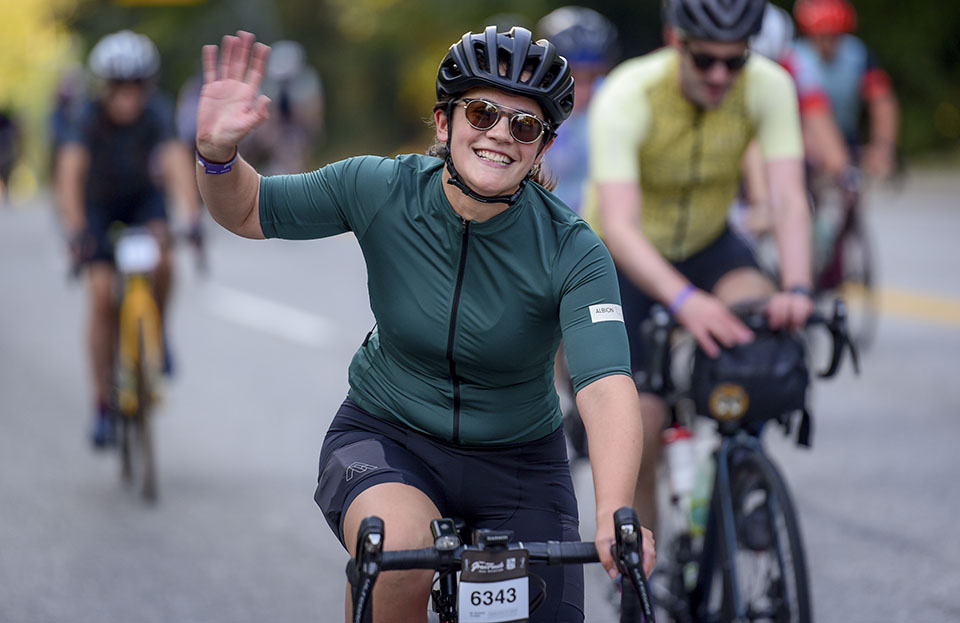
Cycling in a sea of smiles. Photo: Jen Letham
Hold your line
A corollary to the first two pieces of information, predictable is safe. Don’t change the line of the direction you are moving in, unless you sign for it, or else you might cut in front of someone who is passing.
Don’t draft unless you are comfortable drafting and the person you are drafting knows you are there and consents to it
“Drafting” or “sitting on someone’s wheel” is when you ride directly behind someone to decrease wind resistance. This is a skill that is generally practised during group rides. Many riders think it is their right to draft whomever they wish. However, I personally believe that, by drafting, you have a responsibility to the other person’s safety/mental comfort, so you should only draft if they are comfortable with you doing so. You should note that when you are drafting, your vision of dangers ahead is restricted. If the person in front of you doesn’t know you are there, they may not point out obstacles. Many times I have seen riders not point out debris or pylons, which has led to very bad crashes.
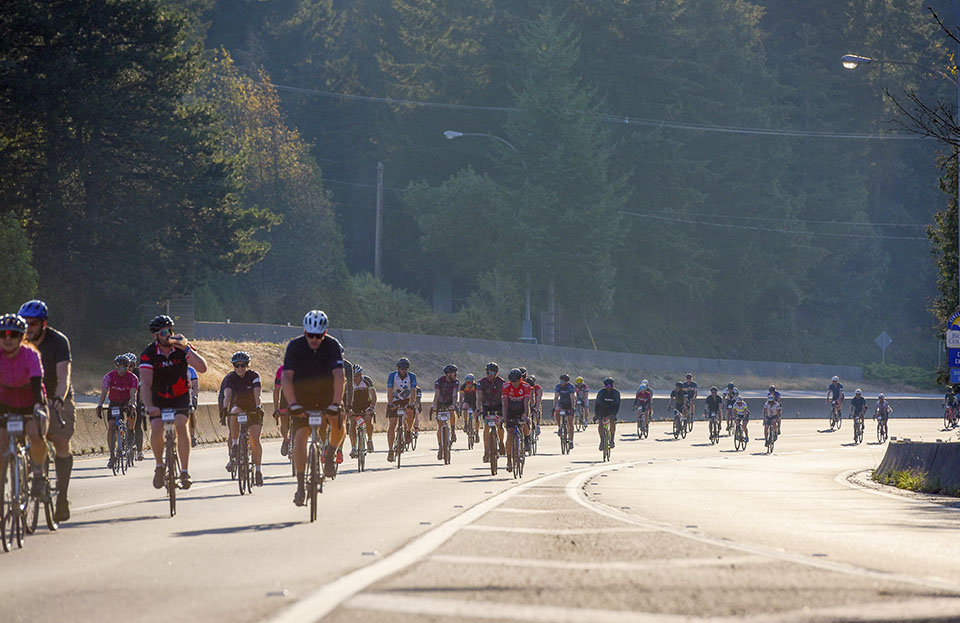
Be prepared and you’ll have a great time. Photo: JWPhotoworks
Be prepared
Bring an inner tube and pump for your bike and bring food and water for your body (also a credit card). There are five stops for both hydration/food and mechanical assistance. There will also be roving mechanical assistance on the course, but it is always good to be prepared. You want to make sure you turn up at the start line with two full water bottles and snacks that you know you like and work for your body. Rest stops in races are meant to supplement your nutrition, not fully replace it.
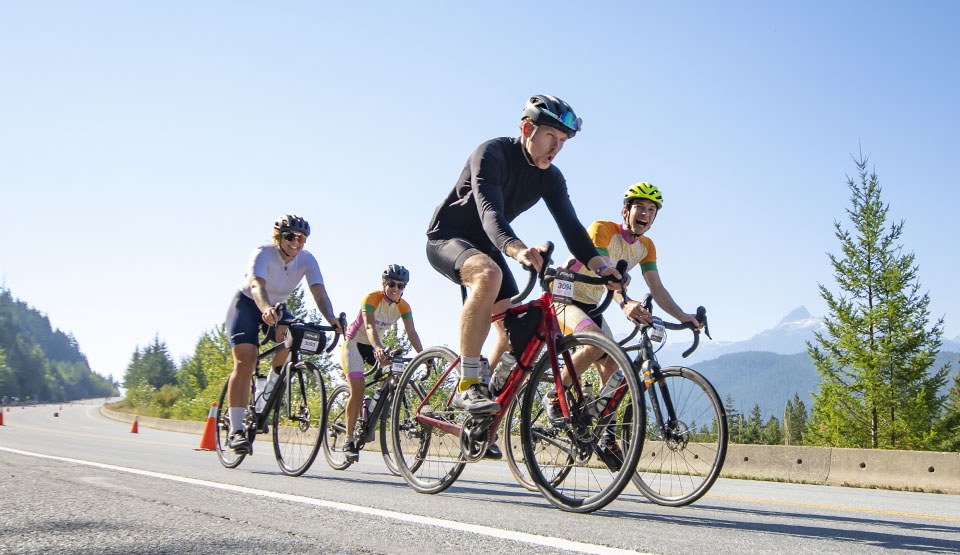
Enjoy breathtaking views along the Sea to Sky. Photo: JWPhotoworks
Save your energy for the “last half”
There are no real extended climbs in this race, though the hills by Furry Creek and Britannia can take in excess of ten minutes each. Most of the elevation will occur after Squamish. It will be a steady but tolling incline from there to the finish in Whistler. Make sure that you save enough energy and food to push through the last 50 km, as for many cyclists it can be the most difficult.
At the end of the day, the GranFondo is a great experience. So, no matter what, please be safe and have lots of fun!
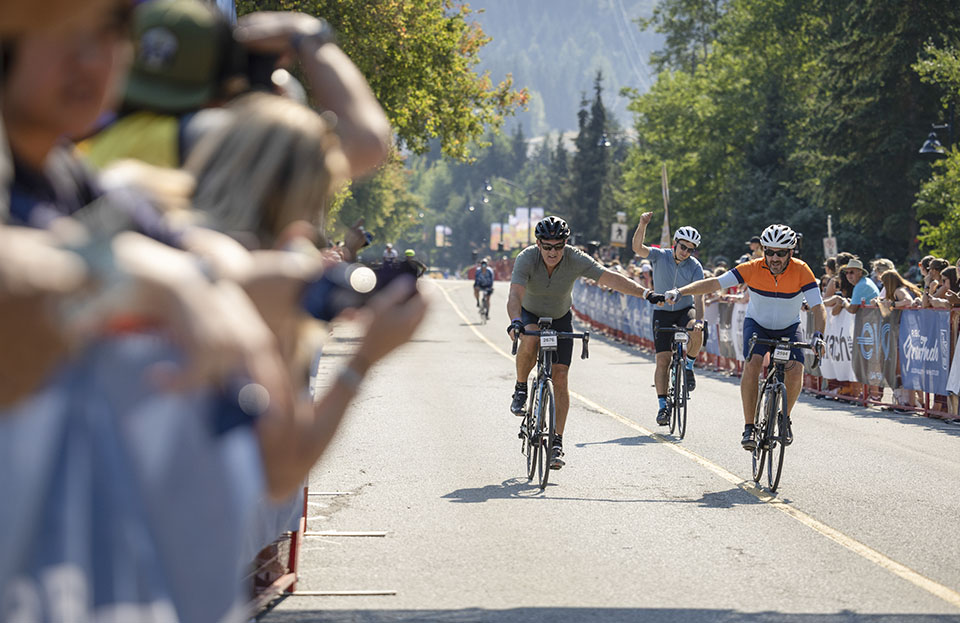
Nothing beats the feeling conquering the famous RBC GranFondo Whistler finish line. Photo: Sterling Lorence
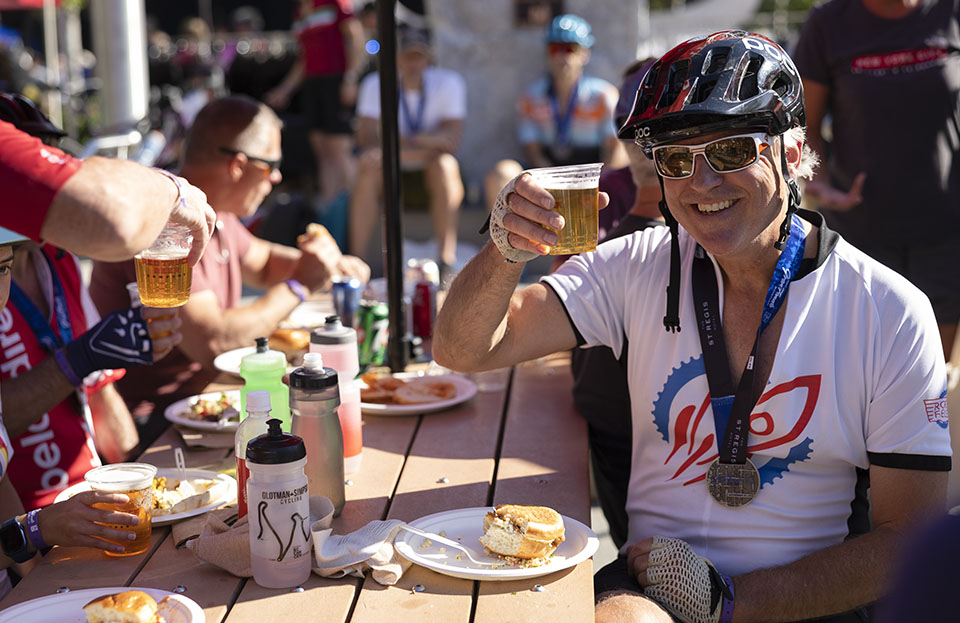
Time to celebrate… Photo: Sterling Lorence
Brian Lim likes to ride bikes (sometimes with his camera). He’s a complete and consummate amateur – both in cycling and in photography, and says he doesn’t take himself seriously – and neither should you. Lim wants to share his love of cycling, so please reach out if you want to talk! You’ll find him on Instagram at @wheelsandwhisky.
This blog first appeared on Vancouver Is Awesome and has been updated to reflect the 2023 event.
- Read to take the challenge? Register for RBC GranFondo Whistler now!
- See also: NEW fueling tips from F2C Nutrition – (full videos here)
- Have questions for F2C? Submit them here and have them answered on our monthly Facebook Live streams
